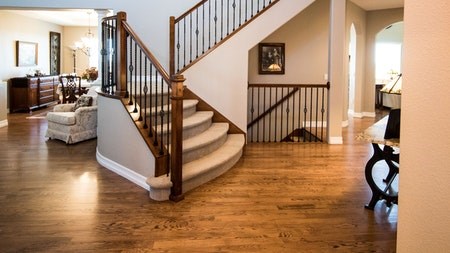For the rental market, this year is marked by the past year. This means that currently, in the wake of all the vacancies created by a frustrating, but necessary, lockdown market in 2020, there exists not just a large variety of rental properties, but at far better rates that were previously unaffordable for many tenants.
TPN Credit Bureau, which partners with Absa, in the provision of real estate data analytics that determine the future rental income that a home loan applicant can apply for, has been monitoring the rental market closely. Michelle Dickens, its CEO says that tenants currently have the upper hand. “High vacancies mean tenants are spoilt for choice, and are now empowered to negotiate rental prices down. Conversely landlords are struggling. They are experiencing low to negative escalations (0.75%), which creates a highly competitive market, and more so when it comes to securing a quality tenant.”
There are stats to prove Dickens’ point: Tenants in good standing dropped from 81.52% (Q1 2020) to 73.50% in Q2 (2020) and slowly clawed back to end Q4 on 77.61%. “Our preliminary data for 2021 Q1 is 78% but this is still not healthy. What landlords are also dealing with is tenants that were unable to pay.”
Rental delinquency can obviously be attributed to the Covid-19 pandemic effects, but these effects are ongoing with 15% of tenants still unable to meet full rental payments. “We are now seeing some improvement as tenant non-payment behaviour has returned to pre-lockdown level, from 6.92% Q1 2020, which almost doubled in the second quarter to 11.22%. However, we saw some picking up in Q4 to 7.75%. Landlords should, however, not be lulled into delayed collection and cancellation processes to non-paying tenants.”
This advice is based on the TPN Tenant Squat Indicator which has jumped from half a percent to just under 2% of tenants who currently live rent-free for a minimum of four consecutive months.
The vacancy rate also proves just how impactful the past year has been if you compare Q1 in 2020 to the same period in 2021, where vacancies increased from 7.47% to 13.3%. The landlords’ response to higher vacancies is a reduction in rent but not at the expense, as previously mentioned, of the tenant quality.
So what are landlords to do? “Many are considering month-to-month leases, which protects both the tenant and the landlord,” says Dickens. “This at least allows the landlord to cancel on seven day’s notice if the tenant fails to pay rent. It’s also a positive for tenants, who are able to cancel on a month’s notice, without a penalty.”
Another trend that is proving popular is a zero deposit. “Many landlords, more specifically those with large portfolios, are finding that a zero deposit is an attractive incentive for securing new tenants. Pricing has become a key factor in a market where every cent counts. We also note that regardless of rental properties providing free appliances, the post-Covid-19 tenant prefers unfurnished rental units, as these remain the most affordable option.”
After affordability, the TPN Tenant Survey for Q1 of 2021 shows that security and distance from schools, shops and business districts are the factors that drive desirability. And for those that are unable to afford a higher rental on their own, co-sharing is emerging as a trend. This applies equally as more households merge, such as is the case with returning dependents to their primary caregiver’s.
Of course technology is a massive incentive. ‘Is there free wi-fi?’ is one of the most frequently asked questions of landlords, and this is more important than ever with so many working from a home base. Also green space. Those landlords who can present a property that has outdoor access have the edge given the need to escape from a busy laptop.
The rental market may be recovering, but it remains quite a distance from being a growth market. However, homeowners with extra land are considering the potential to earn an income from building granny flats. Some property owners with existing granny flats are even moving granny, or child, back into the house to avail of an income-producing cottage.
Airbnb hosts are also switching back to their previous model, which was long-term rentals given the woeful state of the tourism market. In some cases, many individuals are selling up their homes to live in Airbnb’s because they are more affordable when compared to the escalating costs of power and services attached to home ownership. This suits millennials particularly well given their nomadic nature and lack of desire to be tied to permanence.
It may take years for the rental market to return to the halcyon days but like all sectors, adjustments and patience is required as we all fit into the ‘new normal’.





